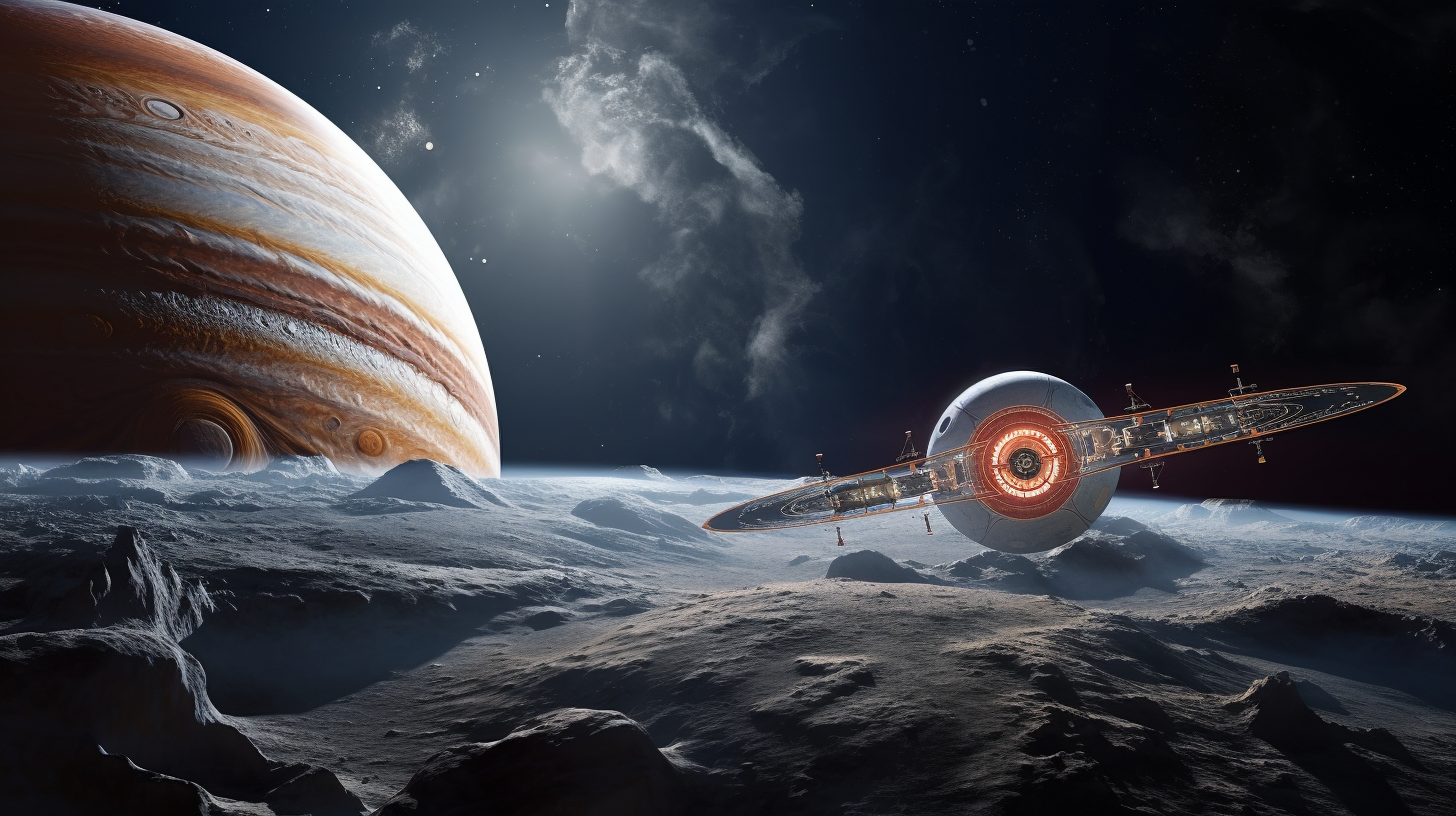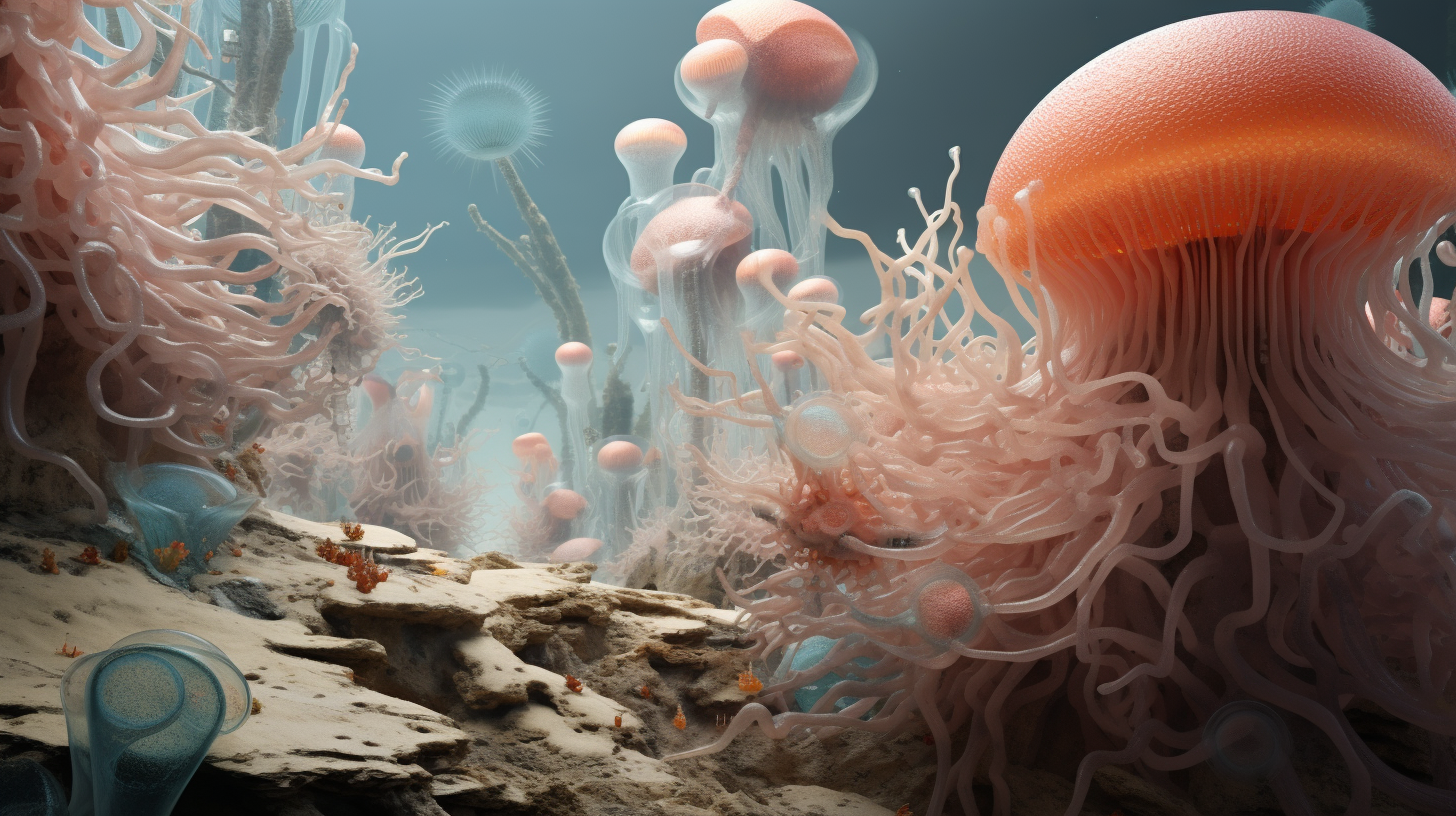Exploring Ocean Worlds in Space
Ocean worlds are celestial bodies with significant subsurface liquid water, often beneath icy crusts, making them prime candidates for harboring extraterrestrial life. These include Europa, Enceladus, Titan, and Triton. Their hidden oceans, potentially suitable for life, are a major focus in the search for life beyond Earth.
These mysterious worlds, hidden within our solar system, offer a unique environment that could harbor life, challenging our traditional views of habitable zones. Well, we’ll be going over:
- What are ocean worlds, and where can we find them in our solar system?
- How do these subsurface oceans offer potential habitats for life?
- What missions and technologies are being developed to explore these enigmatic ocean worlds?
Could ocean worlds hold the key to discovering extraterrestrial life? Let’s find out.
What Are Ocean Worlds?
Ocean worlds are celestial bodies with significant amounts of liquid water beneath their surfaces. Unlike Earth-like planets, where oceans exist on the exterior, these intriguing worlds hide vast oceans underneath thick layers of ice.
Crucial to the search for extraterrestrial life, these subsurface oceans may harbor conditions suitable for life as we know it. The presence of water, combined with the chemical ingredients and energy sources provided by hydrothermal vents, are what make ocean worlds prime candidates for harboring life.
Different Types of Ocean Worlds
Ocean worlds vary in size, composition, and the characteristics of their hidden oceans. Here are a few examples:
- Europa: Jupiter’s moon, known for its icy shell and potentially massive subsurface ocean. – Enceladus: Saturn’s moon notable for its geysers, ejecting water vapor and ice particles into space, indicating a subsurface ocean.
- Titan: Also a moon of Saturn, Titan has a thick atmosphere and surface lakes of methane, with the possibility of a subsurface water ocean. – Triton: Neptune’s largest moon, suspected to have a subsurface ocean, considering its geologically young surface and potential geysers. – Pluto: Once considered the ninth planet, Pluto might have a liquid ocean under its heart-shaped glacier, Sputnik Planitia.
Each of these ocean worlds presents unique environments and challenges for exploration and study. With advanced technology, we’re beginning to unlock the secrets they hold and understand their roles in our solar system’s history and the broader quest for life beyond Earth. Exploring these worlds takes us a step closer to answering profound questions about the cosmos and our place within it.
Discoveries of Ocean Worlds
Over the years, remarkable discoveries have shed light on the existence of these enigmatic celestial bodies, each with its own story to tell.
Europa
- Jupiter’s Icy Moon: Europa has emerged as one of the top candidates in the quest to find life beyond Earth.
- Evidence of Salty Ocean: Galileo spacecraft data and subsequent observations suggest a vast, salty ocean beneath Europa’s icy crust, potentially twice the volume of Earth’s oceans.
- Future Missions: The planned Europa Clipper mission aims to scrutinize Europa’s habitability, seeking clues about its subsurface ocean and its capacity to support life.
Enceladus
- Saturn’s Icy Surprise: Enceladus, though smaller than Europa, has captured our attention with its dynamic geysers ejecting water vapor and organic compounds.
- Deep Seafloor Vents: The Cassini spacecraft revealed Enceladus’s geysers contain molecules associated with hydrothermal vents, hinting at a warm ocean floor that’s energetically favorable for life.
- Chemical Complexity: Analysis of the ejected plumes shows a mix of complex organic molecules, illustrating a diverse chemical environment.
Titan
- Largest Moon of Saturn: Titan stands out with its dense atmosphere and surface lakes of liquid methane and ethane.
- Cryovolcanism and Subsurface Ocean: There’s compelling evidence pointing to cryovolcanism and a subsurface water-ammonia ocean.
- Dragonfly Mission: NASA’s Dragonfly rotorcraft is set to explore Titan’s diverse environments in the mid-2030s, further uncovering the secrets of its potential ocean world.
Potential for Extraterrestrial Life
Conditions for Life in Ocean Worlds
Life, at its core, seems to require liquid water, essential chemical elements, and a stable enough environment to sustain biological activity over geological time frames.
- Liquid Water: A key ingredient, as all biochemistry on Earth involves water.
- Essential Chemical Elements: Elements like carbon, hydrogen, nitrogen, oxygen, phosphorus, and sulfur are considered the building blocks of life.
- Energy Sources: Beyond sunlight, life can derive energy from chemical reactions, such as those that occur at hydrothermal vents on Earth’s ocean floors.
- Stable Environment: To allow complex chemistry to unfold, a stable environment that does not vary widely in temperature or chemical composition is beneficial.
We’re finding that ocean worlds harbor many of these vital conditions.

Possibility of Microbial Life
When pondering life on other planets, we often envision microbial life forms first. These are the simplest and most resilient of organisms, and they may be thriving in environments similar to those found in the subsurface oceans of ocean worlds.
- Europa’s Subsurface Ocean: With a potential mix of water and minerals, Europa presents a prime habitat for microbial life.
- Enceladus’s Geysers: Erupting geysers suggest a warm sub-surface environment teeming with organic compounds, offering a suitable energy source for microbes.
- Titan’s Cryovolcanism: Even with a surface covered in hydrocarbons, the cryovolcanic activity could provide the necessary heat and chemical diversity for life.
Understanding how microbes thrive in extreme environments on Earth gives us clues about where to look for similar life forms on other worlds.
Search for Signs of Life
Our efforts to find life beyond Earth encompass a variety of strategies and missions, with ocean worlds being at the forefront of this quest.
- Spectroscopy: By analyzing the spectrum of light reflected from these worlds, we can identify the chemical signatures that might indicate life.
- Sample Return Missions: Future missions may collect and return samples from the plumes of Enceladus or the surface of Europa for in-depth analysis.
- In Situ Analysis: Missions like the upcoming Europa Clipper and Dragonfly to Titan will carry instruments specifically designed to detect biosignatures or life’s chemical fingerprints.
Every discovery we make builds on our understanding of where and how life might exist elsewhere in the cosmos.
Challenges in Exploring Ocean Worlds
Space exploration ignites our curiosity and extends our reach to the furthest corners of the cosmos. Yet, traversing the daunting stretch to ocean worlds presents a unique set of challenges, each demanding innovative solutions and careful consideration.
Extreme Environments
The term “extreme” barely scratches the surface when describing the conditions on ocean worlds:
- Intense radiation: Jupiter’s moon Europa, for example, is bombarded with radiation levels that would quickly incapacitate standard spacecraft electronics.
- Subzero temperatures: Dropping to more than -200 degrees Celsius on Saturn’s moon Enceladus necessitates thermal systems to keep instruments functional.
- High-pressure scenarios: Depths of the subsurface oceans can create pressure that easily crushes conventional submarines.
These hostile environments push the limits of our current technology, requiring us to develop robust methods to protect delicate instruments and maintain communications with Earth.
Technical Challenges
As we peer into the depths of these distant moons, the technical hurdles become readily apparent:
- Long-duration missions: Navigating the vast distances to these ocean worlds means technology must remain operational for years, or even decades.
- Autonomous operations: With delayed communications, spacecraft need advanced autonomy to handle unexpected situations without immediate human intervention.
- Deep-ocean exploration: The ocean below the ice crust demands technology capable of penetrating and exploring an alien environment while relaying data back to Earth. Our strides toward conquering these technical challenges are crucial for unveiling the mysteries that rest beneath the icy shells.
Ethical Considerations
As stewards of space exploration, we are responsible not just for discovery but also for the preservation of these pristine environments:
- Planetary protection: The risk of contaminating worlds with Earth microbes is a pressing concern, which requires stringent sterilization protocols for spacecraft.
- Sample containment: Should we return samples, we’ll face the challenge of preventing possible alien microbes from affecting Earth’s biosphere.
- Resource utilization: The potential future use of resources from ocean worlds sparks debate on the ethics of exploiting extraterrestrial environments for human benefit.
Tackling these ethical considerations remains at the forefront of our exploration endeavors, ensuring that we venture forth not only with curiosity but with conscience.
Future Missions to Ocean Worlds
Future missions to ocean worlds are poised to answer fundamental questions about the potential for life beyond Earth, the composition of extraterrestrial oceans, and the geophysical dynamics of these distant moons.
Europa Clipper
- Set for a launch in the 2020s, this flagship mission to Jupiter’s moon Europa is a game-changer in our quest.
- Europa Clipper’s suite of instruments will map Europa’s surface in high detail, searching for signs of subsurface oceans.
- The spacecraft will perform repeated flybys, providing close-up images of the icy surface and possibly plumes of water erupting into space.
- Its primary goals are to assess Europa’s habitability and aid in selecting sites for future lander missions, possibly discovering habitats where life might exist.

Dragonfly
- Slated to launch in 2027, Dragonfly is an innovative drone-like lander heading to Saturn’s largest moon, Titan.
- Titan’s thick atmosphere and low gravity make it an ideal candidate for aerial exploration.
- Dragonfly will explore diverse environments, from dunes to the floors of impact craters, where liquid water and complex organic materials may have mixed.
- The mission’s ambitious goal is to study prebiotic chemistry and extraterrestrial habitability on a world where water and hydrocarbons coexist in liquid form.
Enceladus Life Finder
- The Enceladus Life Finder (ELF) is a proposed mission to assess the habitability of Saturn’s moon Enceladus, famous for its plumes of water-ice.
- ELF aims to pass through these plumes to analyze the organics, salts, and ice grains ejected from Enceladus’s subsurface ocean.
- The mission hopes to determine if Enceladus’s ocean contains the ingredients necessary for life, potentially including biosignatures.
- As we plan for ELF, we’re aware that the moon’s south polar region, where the plumes are located, is a prime location to search for signs of life in the Solar System.
Conclusion
The mysteries of ocean worlds beckon us with the promise of discovery. The upcoming Europa Clipper and Dragonfly missions, along with the proposed ELF mission, represent monumental strides toward unraveling the enigmatic conditions of these distant moons. With each probe we send and every bit of data we collect, we edge closer to answering the age-old question of whether we’re alone in the universe. Our journey into these alien seas is not just a quest for knowledge—it’s a testament to our enduring spirit of curiosity and our unyielding desire to reach beyond the horizon.






